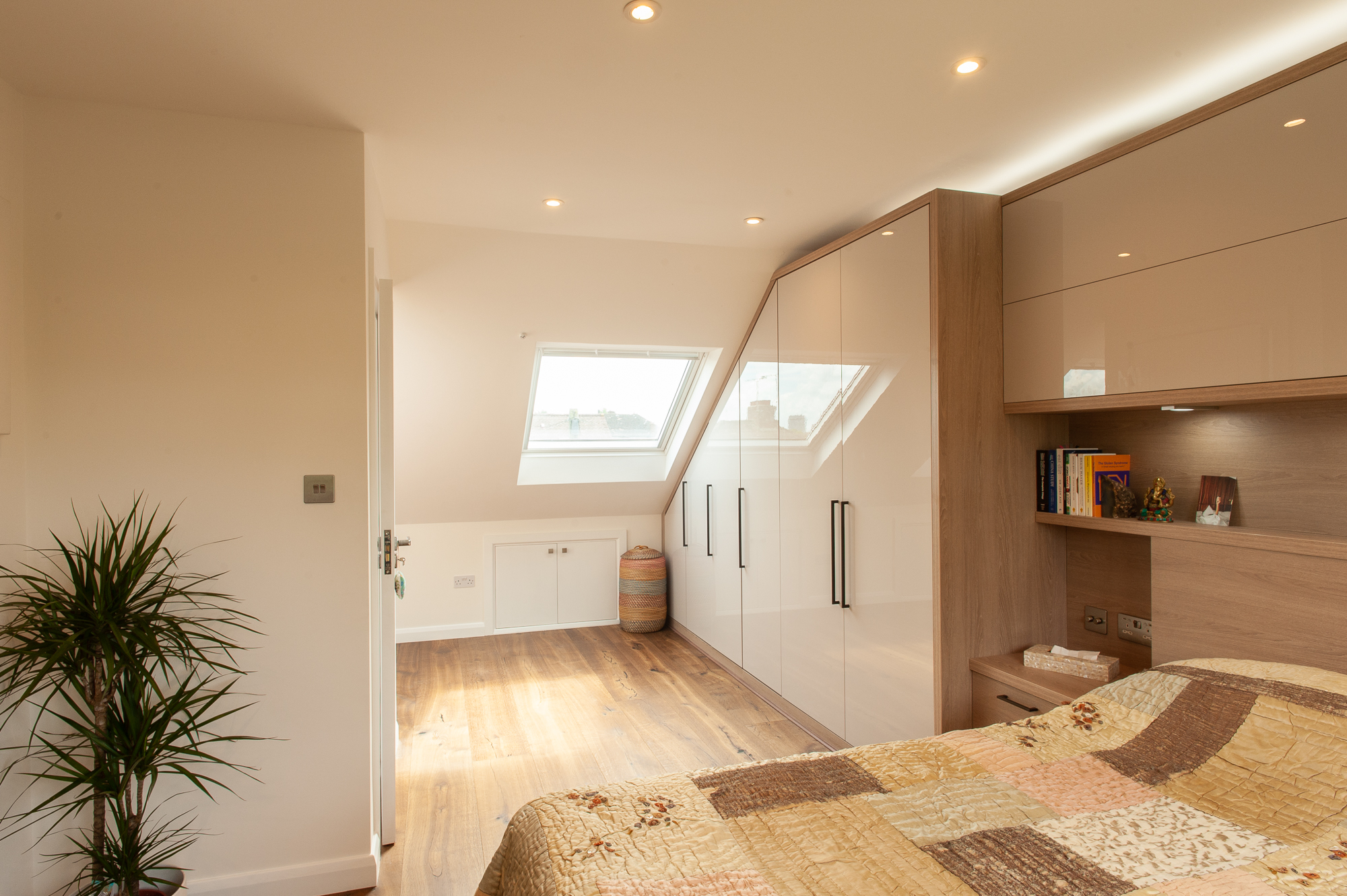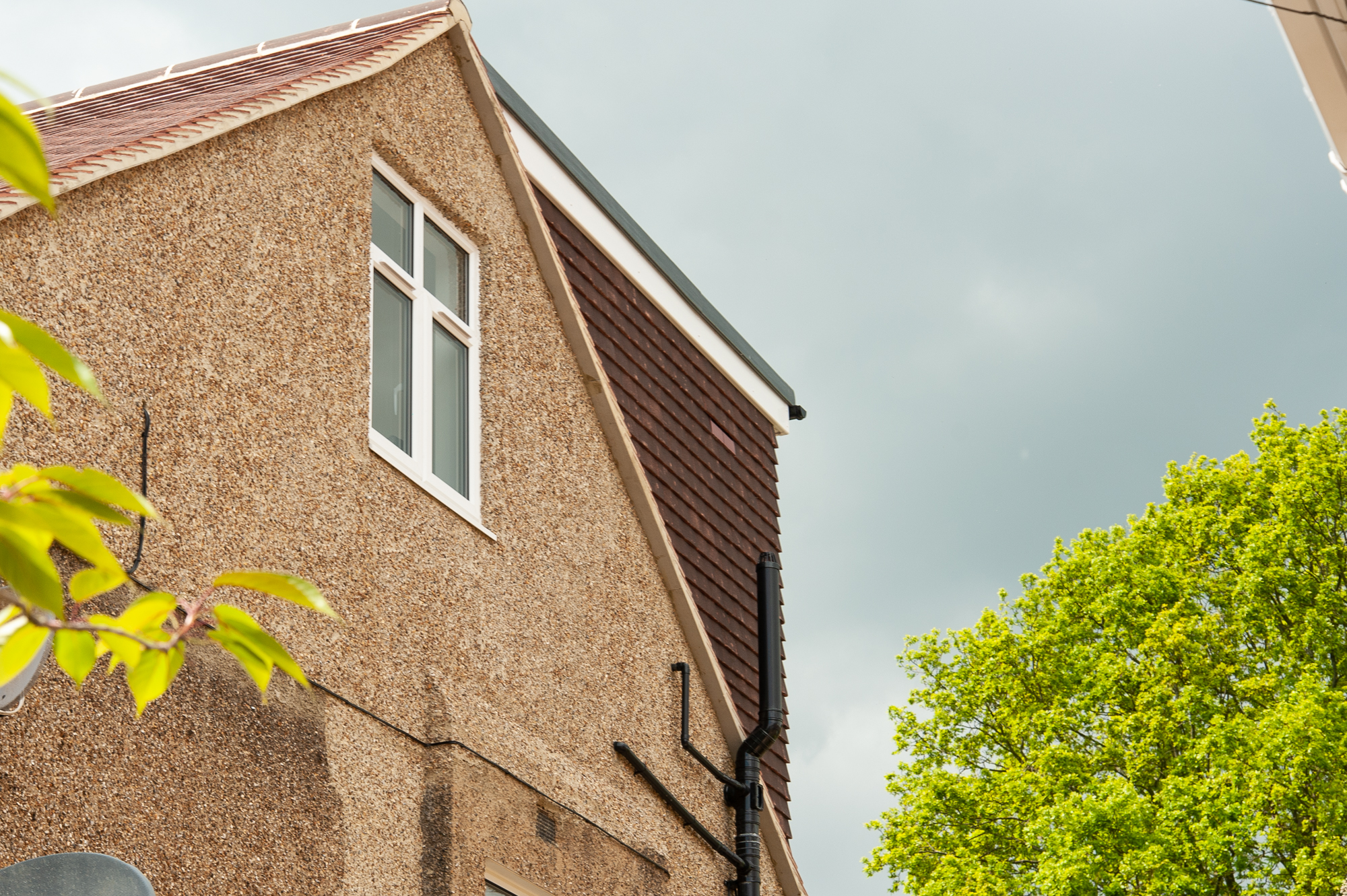If you are thinking of transforming your dead loft space into a stylish loft bedroom or living space, you will no doubt come across dormer loft conversions. It is one of the most common types of loft conversions in London and is a cost-effective option. Dormer lofts are often constructed using the existing slope of the roof and offer a practical solution to expand your home on a budget. Depending on the kind of property, the size (can be big enough for an ensuite), and the style of the extension, some dormer loft conversions may provide up to 50 cubic metres of extra space. Dormer loft conversion causes the least amount of disruption as compared to most of the other forms of conversions, as most of the work can be done from scaffolding outside your home.

What is a dormer loft conversion?
Dormer loft conversions are a style of extension where the shape of the roof is modified to create a larger indoor loft space. These conversions extend the roof from its peak laterally, leaving a flat part that is bordered by conventional sloping sides.
The goal is to turn a cramped loft into a larger, airy room with the new dormer windows providing transformative natural light, just like the other rooms in your house. You can add more standing room to your space without adding an addition or modifying the floor layout by changing the angle of the eaves (or removing them entirely).
Below are different types of dormer loft conversions. You’ll find something that fit your requirements and aesthetic:
Flat roof dormer loft conversion: In this type of loft conversion the shape of the roof is adjusted to increase the internal volume of the loft. The conventional sloping sides of the roof are extended laterally from the peak giving the loft a flat roof style.
Bungalow dormer loft conversion: In this type of conversion a loft space is created above a single-storied abode.
Shed roof dormer loft conversion: Shed-shaped dormer is very similar to flat roof dormers. The only major difference is that the extended sides of the roof are slightly downward like a shed.
Gable-fronted dormer conversions: In this conversion, the roof is extended perpendicularly to the original roof and a new gable wall is created that is raised to the present ridgeline.
Hip roof dormers: These conversions have a sloping roof on three sides. This extension is suitable for you if your goal is to create a beautiful space as these conversions look great from the outside but do not add much interior space.
L-shaped dormer extension: Two dormer extensions are connected to make an L-shaped dormer extension. This type of conversion will add significant value to your property and will greatly expand the living space of your home which can even be converted into another master bedroom.
What type of property is suitable for a dormer loft conversion?
The suitability of your loft to be converted will depend on several factors including the amount of head height available, the roof pitch, the construction, and structure, and most importantly if there are any obstructions such as chimneys or water tanks. The best way to go forward is to ask a building professional to visit your home to inspect the loft space.
Depending on when it was constructed, your home will either feature roof trusses or rafters. You should be able to identify which one you have just by opening the loft hatch and peeking inside.
Traditional rafters run along the roof’s perimeter, leaving the majority of the triangle’s three corners unoccupied. Truss frame roofs occupy a significant amount of space within the loft. They first appeared in the 1960s and have recognisable W-shaped trusses. Trusses in a loft may be removed to convert the space, although this requires additional structural support. Before making any adjustments, it is important to get advice from a structural engineer.
Do you need planning permission for a dormer loft conversion?
Most of the time, dormer loft conversions do not require planning permission since they are considered “permitted projects.” It is best to consult a building professional to check whether you require planning permission for any or all the work. You can also seek advice from your local authorities.
Permitted development rights are more constrained if you live in a flat or maisonette or a conservation area in London. So, you will need to get planning permission.
If your home is semi-detached or terraced, the Party Wall Act of 1996 will also come into play if the conversion requires any structural changes to the shared wall.
What are the dimensions of this type of conversion?
The minimum ceiling height needed for a loft conversion is 2.2 metres to comply with building regulations. You can measure this for yourself by using a tape measure to extend from the floor to the higher point of the roof space. Some homes with low-pitched roofs may not be appropriate for a loft conversion since the loss of headroom cannot be compensated by building a large flat-roof dormer.
If your roof space is not tall enough, there are two solutions, but both are very expensive.
- Raising the roof height: It is possible to make changes in the structure, but the major problems are the high expense and complexity of obtaining planning approval, particularly for a terraced or semi-detached home.
- Lowering ceilings in the rooms below: This is a great way to borrow some head height. Consider if the additional area in the loft will compensate for the lower ceilings in the rooms below.
How much does it cost to build a dormer loft conversion?
The size, intricacy, fixtures, and fittings of the planned work will all have a significant impact on the price of a dormer loft conversion in and around London. Standard dormer loft conversions typically cost approximately £35k, but a surveyor will need to visit your house and thoroughly go through your needs before giving you an exact price.
What factors are to be considered when designing a building space?
Any conversion or extension needs full attention and the best team. Ask your network who have recently done any similar conversion for design and build firm recommendations.
It is important to have a complete budget planned before starting the project so there are no shockers or mistakes in the future.
The energy bills are going up and we want to do our best to save up as much as possible. Thinking about the energy efficiency of your home is very important. Read this ultimate guide on saving money on home improvements to know all the important aspects to consider while renovating including planning and budgeting and energy efficiency.
If you have questions regarding dormer loft conversions or would like more information about loft conversions in the London region, please contact us and book your free consultation.







